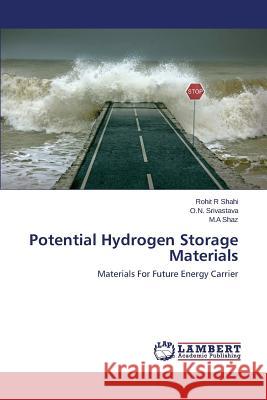Potential Hydrogen Storage Materials » książka
Potential Hydrogen Storage Materials
ISBN-13: 9783659621697 / Angielski / Miękka / 2014 / 160 str.
It is now agreed that for harnessing hydrogen, particularly for vehicular transport, storage forms the crucial issue. Tremendous efforts have been devoted to the research and development of materials that can store sufficient hydrogen so as to have the adequate hydrogen capacity and at the same time possess suitable thermodynamics and kinetics. After approximately two decades of exploration, the scope of hydrogen storage materials has got greatly transformed, from traditional metal hydrides (having 2 wt. %) to complex and chemical hydrides having large variety of materials that possesses high storage capacity. The introduction of complex hydride to hydrogen storage enhanced researcher's interest to design and optimize new materials. These materials satisfy most of the requirements laid down by US Department of Energy. Hydrogen storage materials can be grouped into three basic types according to the nature of the metal-hydrogen bond. These are (a) elemental hydride (b) intermetallic hydride (c) complex hydrid. The studies discussed and described in this book focused on above mentioned three different classes of hydrides.
It is now agreed that for harnessing hydrogen, particularly for vehicular transport, storage forms the crucial issue. Tremendous efforts have been devoted to the research and development of materials that can store sufficient hydrogen so as to have the adequate hydrogen capacity and at the same time possess suitable thermodynamics and kinetics. After approximately two decades of exploration, the scope of hydrogen storage materials has got greatly transformed, from traditional metal hydrides (having~2 wt. %) to complex and chemical hydrides having large variety of materials that possesses high storage capacity. The introduction of complex hydride to hydrogen storage enhanced researchers interest to design and optimize new materials. These materials satisfy most of the requirements laid down by US Department of Energy. Hydrogen storage materials can be grouped into three basic types according to the nature of the metal-hydrogen bond. These are (a) elemental hydride (b) intermetallic hydride (c) complex hydrid. The studies discussed and described in this book focused on above mentioned three different classes of hydrides.











